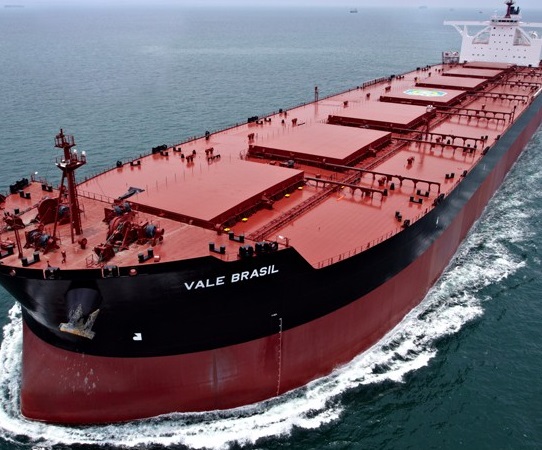From Wolf Street, July 28:
The Largest Ships in the Huge Iron-Ore Trade
Exports are dominated by two countries, imports by three. And everything revolves around China.
China’s phenomenal and somewhat worrying rise as the top steel producer in the world has fueled an absolutely unprecedented boom in the trade of iron ore. The latest data available (2016) put the worldwide seaborne dry bulk trade at 4,553 million metric tons, of which 1,354 million metric tons, or 30%, were iron ore. The iron ore tonnage is up 37% from 2010.
The iron ore trade is overwhelmingly directed at East Asia: China accounted for 68%, Japan for 10%, and South Korea for 5%. Combined, they account for 83%. Germany, next in line, accounts for only 3%.
Iron ore exports are even more concentrated: Australia accounts for 57% and Brazil for 26%, for a combined 83%. South Africa, third in line, accounts for 5%.
The latest data from China claim the country is the third largest iron ore producer in the world at 375 million metric tons. But to fuel its gargantuan steel industry, China has to import enormous quantities of iron ore from abroad.
China, the iron ore producer, however, has a major problem: to help sustain its dramatic growth in steel production, it has started mining on a large scale even very-low grade deposits, resulting in a steep drop in the average iron-ore grade produced.
Iron ore is divided in two categories for commercial purposes: high-grade – over 50% content in pure iron (Fe) – and low-grade (below 50% Fe). Low-grade iron ore usually requires capital intensive and often time-consuming processes collectively called “beneficiation” before being used.
Chinese iron ores are generally very low-grade these days, with an average Fe content of just 32%, requiring extensive beneficiation. In 1995, the average Fe content was 49%.
By contrast, Brazilian iron ores have an average Fe content of 66%, even higher than the celebrated Swedish iron ores which for centuries were the best available in quantity (at last check, 65%). Australia’s average Fe content is 58%.
High-grade iron ores command a large premium over low-grade ores, but often the latter are so cheap as to make them economically attractive despite the costs of beneficiation. However, beneficiation of iron ores under 30% Fe content is usually considered uneconomical, no matter how cheap the ore itself, the energy used in the beneficiation, and how large the scale of operations. This raises some very interesting questions about the economics of China’s large-scale use of domestic low-grade iron ores with an Fe content as low as 25%.
Australian iron ore exports come overwhelmingly from Western Australia, and the breakneck increase in production over the past decade has gone wholly to feed the iron mills of China. The latest available data from Australia’s Department of Industry, Tourism and Resources are for 2015. They put iron ore production at 817 million metric tons, more than double 2009 production (394 million metric tons).
Not even the 2008 Financial Crisis impacted the volume of iron-ore production in Australia in any meaningful way, possibly due to the various stimulus programs instituted by the Chinese government to support their heavy industries.
At the receiving end of this trade are China’s megaports, such as Ningbo-Zhoushan, which, in terms of raw tonnage, is by far the busiest port in the world: in 2016, it handled 889 million metric tons of freight.
Ningbo-Zhoushan is the main gateway for commodities entering China and for bulk cargo, such as chemicals, being exported. It has an enormous capacity: 191 berths, 39 of which are classified as “deep water,” meaning they can be used by the largest oil tankers and dry bulk carriers at full load.

But even for a megaport, unloading the largest dry bulk carriers is not an easy process. The Valemax-class iron ore carriers, with a capacity of 400,000 metric tons, are 362-meters (1,200 feet) long and 65 meters (214 feet) wide (image via Vale)....MUCH MORE
...These massive Valemax iron ore carriers are changing the iron ore trade: The 42 completed so far represent 15% of worldwide capacity, and there are presently firm orders for another 26. If no extra iron ore carrying capacity is added, by 2020 the Valemax will represent 24% of worldwide iron-ore carrying capacity. Astonishing and worrying at the same time.
This is one of the reasons why the Baltic Dry Index is not the reliable measure of sea trade it once was: As iron ore represents over 29% of dry bulk cargo worldwide, with such a massive supply of carrying capacity, rates are constantly repressed, and that’s without taking into account the long-term contracts (10+ years) that shipping companies such as COSCO and Pan Ocean have with mining concerns....